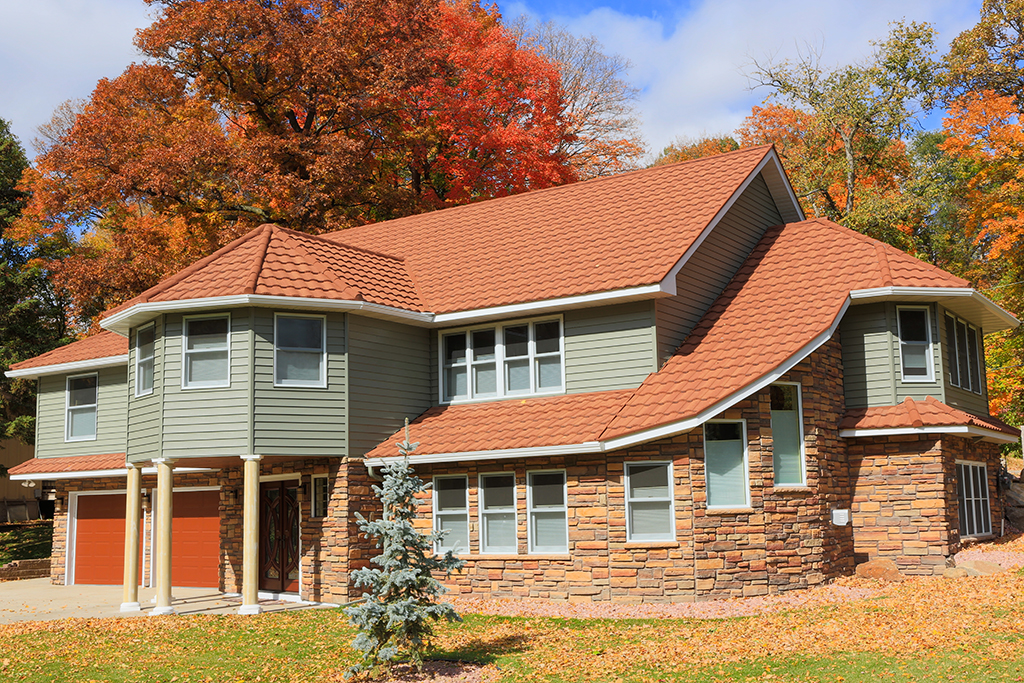How to Choose The Right Siding
We all know that we shouldn’t judge a book by its cover. But most of us judge a home by its curb appeal—the attractiveness of a home’s exterior, as viewed from the street. Even though the outside of a home doesn’t sum up what’s on the inside, the material you choose to cover your home can affect the HVAC system and the safety of your interior walls from the elements. The right siding for your home can enhance its curb appeal, save you money, and shorten your ever-growing list of home maintenance chores. Learn why we recommend seamless steel siding.
The purpose of siding
At the very least, the exterior of a home—the siding—should protect its occupants, foundational structure, and ventilation systems from the elements. There are numerous factors you should consider when choosing exterior materials:
- Water resistance
- Ease of installation
- Energy efficiency
- Aesthetics
- Versatility
- Durability
Different types of siding
Homeowners can choose from a variety of siding materials, the most common being vinyl, brick, stone, stucco, fiber cement, wood, and stainless steel. Each varies in cost, durability, style, energy efficiency, and required maintenance.
Vinyl – By far the most widely-used exterior of modern homes, vinyl siding is made in panels or shingles, resulting in visible seams. The siding can melt in fires, be pulled off by the wind, or crack in cold temperatures.
Brick – Environmentally friendly and noncombustible, brick siding is the most expensive of the home cladding materials. Mortar may need to be replaced to seal out moisture, and because brick is porous, it can crumble without proper water drainage.
Stone – Unlike brick, stone is non-porous, making it moisture resistant. Stone is a completely natural, virtually indestructible material, but stone cladding is expensive to install. If improperly applied, the mortar can crack.
Stucco – Made of Portland cement, sand, lime, and water, stucco can be shaped and textured to cover curves in architecture and completely seal corners. Stucco application requires multiple layers and can crack if the foundation shifts.
Fiber cement – Made with cement, sand, and cellulose fibers, fiber cement looks like wood but lasts longer and requires less maintenance. Fiber cement can be difficult and expensive to install.
Wood – Wood presents a variety of style options, including logs, panels, or bevel siding made from pine, spruce, fir, cedar, or redwood. Wood can crack, split, warp, rot in excessive moisture, and burn quickly in the event of a fire. If painted, the color will fade or peel over time.
Seamless Steel Siding
Steel siding is an ultra-durable option, ideal for protection against snow, sleet, frost, rain, and wind. Spotless & Seamless steel siding is applied to the home without ugly seams, maintains its look indefinitely, and can be painted or recycled. It doesn’t absorb moisture or feed insects. Steel siding can be expensive, but unlike aluminum, steel retains its color and does not dent easily. Some textures resemble wood.
The best siding will protect your home from the extreme cold of winter, summer humidity, and unpredictable storms. At Spotless & Seamless Exteriors, your local steel siding contractor, we believe you can guard your home against the elements, save money on maintenance in the long run, and add to its curb appeal. That’s why we specialize in installing seamless steel siding for Minnesota homeowners to enjoy for years to come. View some of our metal siding projects.
Contact your Maple Grove siding contractor today to learn more.



